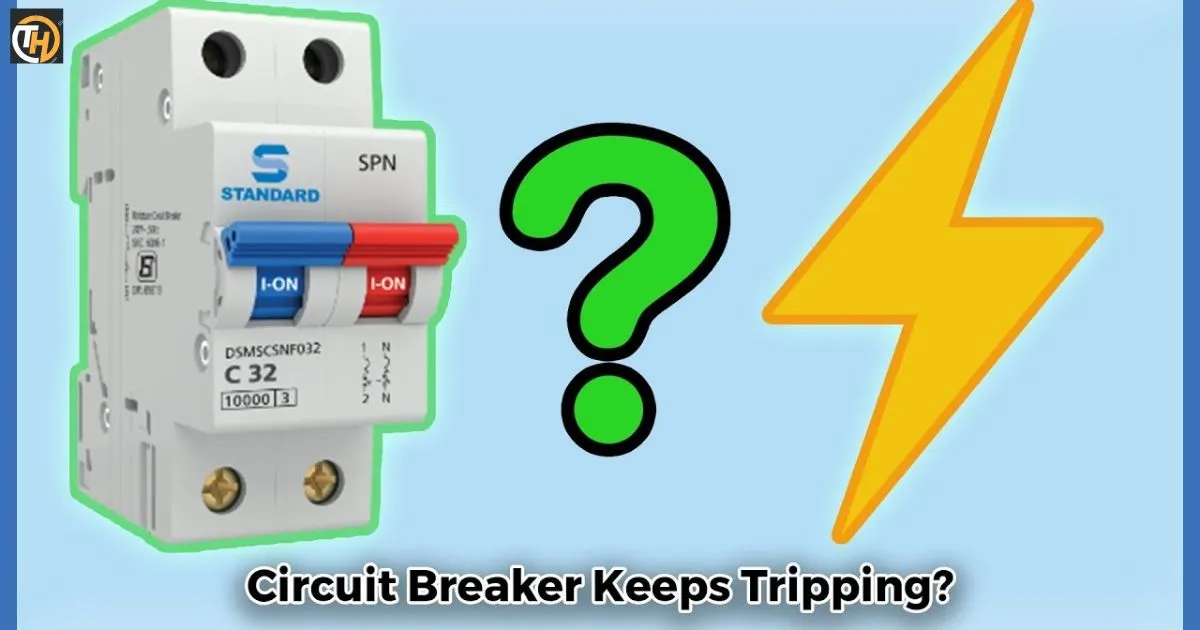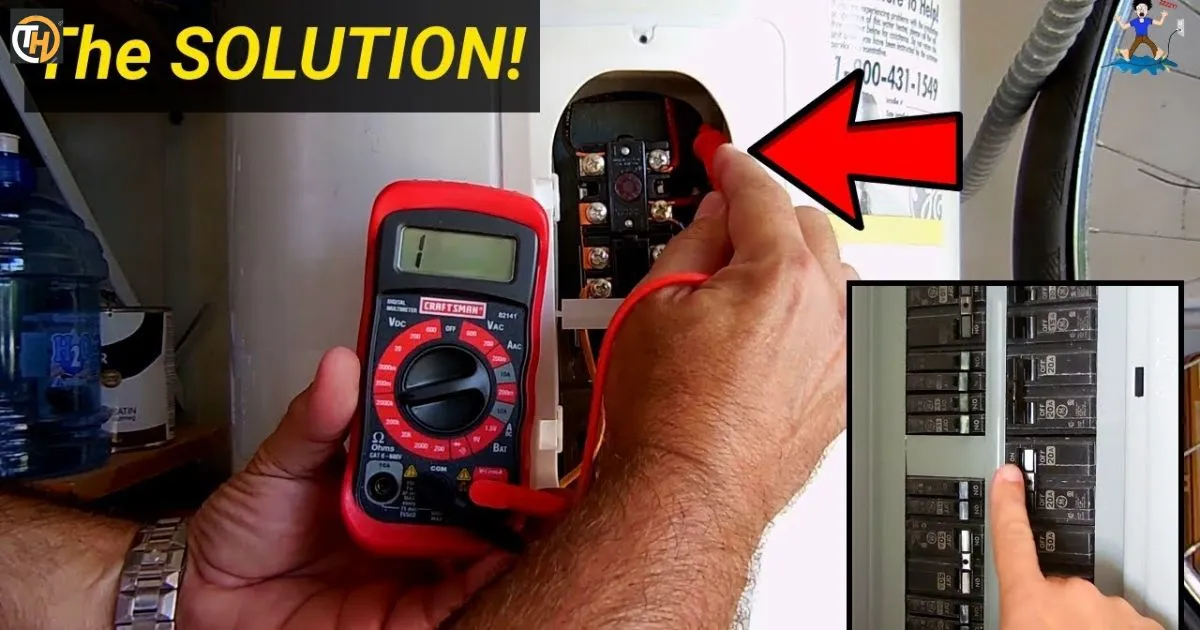The breaker size for a water heater refers to the amperage rating of the circuit breaker that controls the electrical supply to the water heater. It’s important to match the breaker size with the water heater’s electrical requirements to prevent potential electrical issues.
Ever wondered why your water heater trips the circuit breaker? It could be due to an incorrectly sized breaker! When it comes to ensuring the safe and efficient operation of your water heater, one critical aspect to consider is the breaker size. The breaker size directly influences the electrical capacity and protection of your water heater’s circuit.
The breaker size for your water heater ensures a safe and reliable electrical setup.. Remember, working with electricity can be dangerous, so always consider hiring a professional if you’re unsure.
Understanding Breaker Size
Breaker size is a critical aspect of your water heater’s electrical system, safeguarding it from potential hazards. Here are key points to help you comprehend the significance of breaker size:
Amperage Capacity
Breaker size is measured in amperes (amps) and indicates the maximum current the breaker can handle. This capacity is crucial for preventing electrical overload.
Protection Against Overloads
The primary function of the breaker size is to act as a safety mechanism. In the event of a power surge or electrical overload, the breaker disconnects the power supply to the water heater, preventing damage or fire hazards.
Safety Measure
Breaker size serves as a fundamental safety measure in your electrical system. It ensures that the flow of electricity to the water heater remains within safe limits, minimizing the risk of electrical accidents.
Preventing Damage
Proper breaker sizing is essential for the longevity of your water heater. It prevents damage to the heating elements and other electrical components by regulating the electrical flow.
Understanding and selecting the right breaker size is pivotal for the overall safety and performance of your water heater. It not only safeguards against electrical issues but also contributes to the efficient and reliable operation of the appliance.
Importance of Correct Breaker Size
Selecting the right breaker size is vital for preventing electrical hazards, ensuring optimal performance, and complying with electrical codes.
Factors Influencing Breaker Size
When determining the breaker size for your water heater, consider the following factors:
Voltage Requirements
Understand the voltage requirements of your water heater. Most residential heaters operate on 240 volts, but it’s crucial to confirm this specification.
Heater Wattage
Identify the wattage of your water heater, typically mentioned on the unit’s nameplate. This information is essential for calculating the amperage required.
National Electric Code (NEC) Guidelines
Refer to the NEC guidelines, which provide standards and requirements for electrical installations. Compliance ensures your electrical system meets safety standards.
By considering these factors, including the impact on electricity bills, you can confidently determine the appropriate breaker size for your water heater. This ensures a safe and efficient electrical setup. Always prioritize compliance with established guidelines to guarantee the safety and reliability of your electrical system.
Step-by-Step Guide to Determine Breaker Size
Identify Heater Voltage
- Examine the water heater specifications to identify the required voltage.
- Common voltages for electric water heaters are 120V, 240V, or even higher.
- Confirm that your breaker’s voltage matches the specified requirement.
Determine Heater Wattage
- Locate the wattage information on the water heater’s nameplate or in the user manual.
- This wattage rating indicates the amount of power the heater consumes during operation.
- Determine the correct breaker size for your water heater but also prioritize safety and adherence to electrical codes
Calculate Amperage
- Utilize the formula: Amperage (A) = Wattage (W) / Voltage (V).
- For example, if your water heater is rated at 240V and 3,600W, the calculation would be 3,600W / 240V = 15A.
- This resulting amperage represents the minimum size breaker required for your specific water heater.
Cross-Check with NEC Guidelines
- Refer to the National Electrical Code (NEC) guidelines for water heater installations.
- NEC provides standards to ensure electrical safety and compliance.
- Confirm that the calculated amperage aligns with the NEC recommendations for breaker size.
Consider Other Factors
- Assess the entire electrical system’s capacity to handle the additional load from the water heater.
- Check for any local electrical codes that might have specific requirements for water heater installations.
Consult a Professional if Needed
- If you are unsure about any aspect of the breaker sizing process, consult with a licensed electrician.
- Professionals can ensure compliance with local codes and guarantee the safety of your electrical system.
By following these comprehensive steps, you’ll not only determine the correct breaker size for your water heater but also prioritize safety and adherence to electrical codes. Always prioritize safety, and when in doubt, seek assistance from a qualified professional.
Common Mistakes to Avoid
Neglecting Voltage
Neglecting the water heater’s voltage requirement is a common mistake that can have significant repercussions. The voltage specification is a fundamental factor in breaker sizing. Ignoring this critical detail may lead to the selection of an incompatible breaker size, risking electrical issues such as overheating and potential damage to the water heater.
Ignoring Heater Wattage
Overlooking the wattage of the water heater is another frequent error. The wattage, often specified on the heater’s nameplate, is a key component in calculating the amperage required for breaker sizing. Ignoring this crucial element can result in miscalculations, leading to the selection of breaker sizes that are inadequate for handling the electrical load of the water heater.
Disregarding NEC Standards
Failure to adhere to the National Electric Code (NEC) standards is a critical mistake with serious consequences. The NEC provides guidelines and standards for electrical installations, ensuring safety and compliance.
Consultation with Professionals
Electricians
When in doubt about determining the appropriate breaker size for your water heater, seeking the expertise of a licensed electrician is highly advisable. Electricians possess the knowledge and experience to assess your electrical system comprehensively.
HVAC Technicians
Heating, ventilation, and air conditioning (HVAC) technicians are valuable resources, especially if your water heater is part of a larger HVAC system. These professionals are well-versed in the intricate connections within HVAC setups, including the integration of water heaters. Consulting with HVAC technicians ensures a holistic approach to your system’s needs.
Signs of Inadequate Panels
Tripping Breakers

Frequent tripping of circuit breakers is a clear indicator of an inadequate electrical panel. It suggests that the panel is struggling to handle the electrical load, leading to protective measures like tripping to prevent overloads.
Flickering Lights
If you notice lights flickering constantly, it could be a sign that your electrical panel is not providing a stable and consistent power supply. Flickering lights indicate fluctuations in voltage, which can be a result of an overloaded or inadequate panel.
Appliance Malfunctions
Appliances unexpectedly shutting down or not functioning properly might be attributed to an inadequate panel. The panel may not be able to supply the necessary power consistently, causing interruptions in the operation of various electrical devices.
Burning Smell
A distinct burning smell near the electrical panel is a serious warning sign. It could suggest overheating due to excessive demand on the panel. This requires immediate attention to prevent potential electrical fires.
Warmth or Hot Spots
Physically touching the electrical panel and feeling warmth or identifying hot spots is another red flag. Excessive heat indicates that the panel is working beyond its capacity, posing a risk of damage to both the panel and connected devices.
Outdated Panel Design
Panels with outdated designs or those that do not meet current safety standards are likely to be inadequate for modern electrical demands. Upgrading to a more advanced and compliant panel may be necessary.
Limited Circuit Availability
If you find yourself frequently needing to reset or shuffle circuits to accommodate new appliances or devices, it could be a sign that your panel is running out of available circuits. This limitation indicates an inadequate capacity to meet contemporary electrical needs.
Voltage Drop
This drop can lead to reduced efficiency and potential damage to sensitive electronic equipment, underlining the importance of ensuring that your electrical panels determine the correct size breaker for your water heater.
Frequent Electrical Repairs
A pattern of recurring electrical issues or the need for frequent repairs may be traced back to an insufficient electrical panel. An upgrade becomes essential to enhance the overall reliability of the electrical system.
Recognizing these signs early on is crucial for maintaining a safe and efficient electrical system. If you observe any of these indicators, it’s advisable to consult with a professional electrician to assess and address the adequacy of your electrical panel.
The Process of Upgrading
If needed, consider upgrading your electrical panel to accommodate a larger breaker. This is often necessary for high-demand water heaters.
DIY Tips for Breaker Sizing
Safety Precautions
When attempting DIY sizing, prioritize safety. Turn off power, use appropriate tools, and follow safety guidelines.
Tools Required

Have tools like a multimeter and voltage tester on hand for accurate measurements.
Here’s the information presented in an informative table:
| Water Heater Type | Voltage (Volts) | Breaker Size (Amperes) | Additional Information |
| Electric Tank Water Heater | 240 | 30 | Use a 30-amp breaker for standard electric tank water heaters. |
| Electric Tankless Heater | 240 | 40-60 (Based on model and requirements) | For tankless electric heaters, choose a breaker size ranging from 40 to 60 amperes, depending on the model. |
| Gas Tank Water Heater | N/A | N/A (Gas-powered, no electrical breaker required) | Gas-powered water heaters operate without an electrical breaker, as they use gas for heating. |
| Gas Tankless Heater | N/A | N/A (Gas-powered, no electrical breaker required) | Similar to gas tank water heaters, gas tankless heaters do not require an electrical breaker. |
Ensure that the chosen breaker size aligns with the voltage and power requirements specific to your water heater model. Always refer to the manufacturer’s guidelines for accurate information regarding breaker size and installation.
Conclusion
In conclusion, correctly determining the breaker size for your water heater is a crucial step in maintaining a safe and efficient electrical system. By understanding voltage, and wattage, and adhering to NEC guidelines, you ensure optimal performance while avoiding potential hazards.
Moreover, cross-checking your calculations with the guidelines provided by the National Electrical Code (NEC) adds an extra layer of assurance that your installation meets the necessary safety standards.











